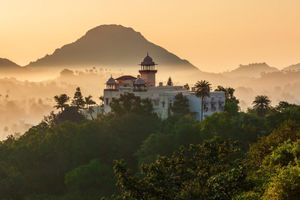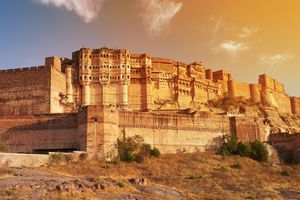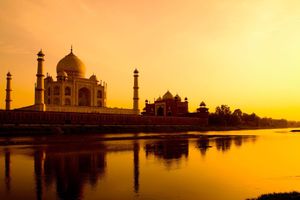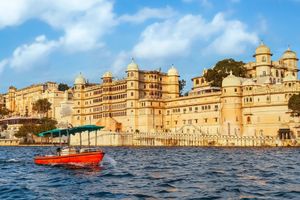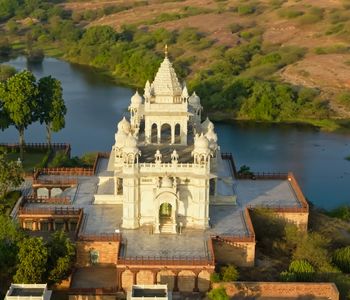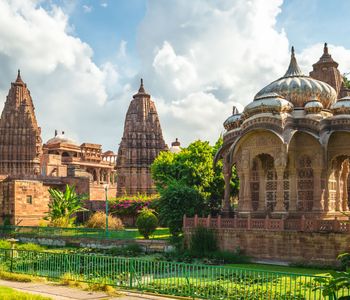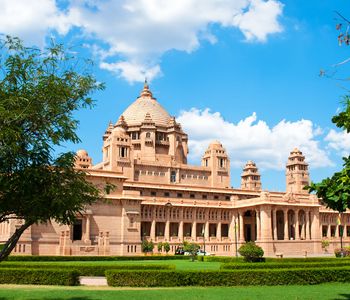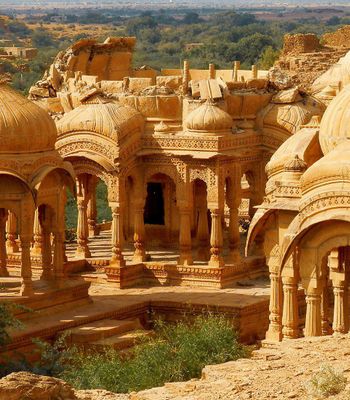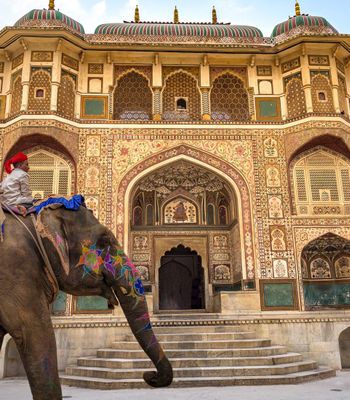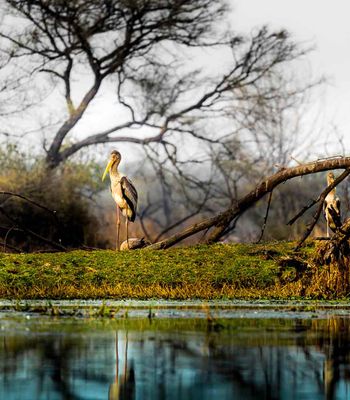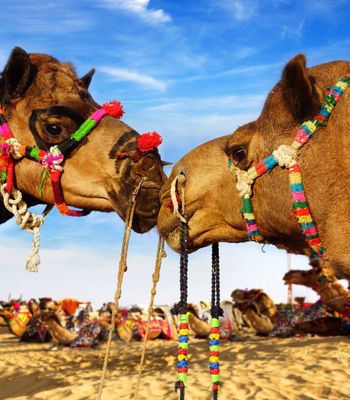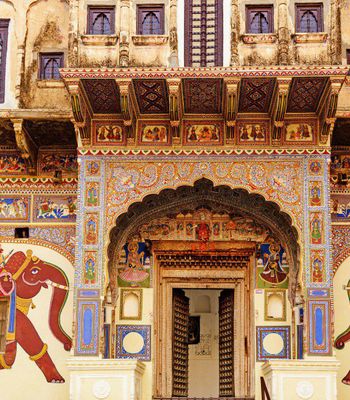Towering over the Blue City of Jodhpur, Mehrangarh Fort is more than just an ancient stronghold; it’s a bold statement of Rajput pride and precision. Built in the 15th century, this fort wasn't just designed to defend, but to impress.
Every wall, gate, and palace inside speaks of skilled craftsmanship, strategic thinking, and a deep-rooted legacy. It’s where engineering met artistry, and history continues to echo through its sandstone corridors.
Mehrangarh Fort: A Legacy Carved in Stone
Mehrangarh Fort, one of the most iconic forts of Rajasthan, was built in 1459 by Rao Jodha, the chief of the Rathore clan and the fifteenth Rathore ruler. He chose Bhakurcheeria, meaning “the mountain of birds”, a rugged, rocky hill some 9 kilometres away, to lay the foundation of his new capital.
Legend tells of a solitary hermit, Cheeria Nathji, who made his home on the windswept hill. When asked to leave, he stood firm in refusal, unwilling to abandon the sacred silence he had long claimed as his own.
After several failed attempts, Rao Jodha sought the intervention of Karni Mata, a revered warrior sage of the Charan caste. Her spiritual authority compelled the hermit to leave, though he cursed the fort to suffer from water scarcity, a condition locals believe persists to this day. Karni Mata laid the foundation stone of the fort, marking its sacred beginning.
To further sanctify the site, a man from the Meghwal community, Raja Ram Meghwal, volunteered to be buried alive in the foundation, a ritual believed to ensure prosperity. His descendants continue to live near Soor Sagar, in a place named Raj Bag, as per the promise made by the Rathores.
The Architecture That Built The Legacy
Rising 400 feet above the city on a rocky hill, its walls are up to 36 metres high and 21 metres thick, designed for solid defence. But beyond its strength, the architecture shows serious attention to detail and style.
Inside the fort, you’ll find some of the finest palaces in Rajasthan. Moti Mahal (Pearl Palace), Phool Mahal (Flower Palace), and Sheesh Mahal (Mirror Palace) are standout examples.
Each has unique carvings, delicate lattice work (jalis), and richly decorated ceilings. Seven massive gates connect different parts of the fort, each built to mark a moment in history.
Each gate of Mehrangarh carries a tale, Jai Pol echoes triumph, and Fateh Pol proclaims freedom. At the same time, Lakhna Pol, Dedh Kangra Pol, Amriti Pol, Loha Pol, and Suraj Pol stood as silent sentinels of ceremony and defence, guarding history in stone and iron.
Much of what we see today took shape during Maharaja Jaswant Singh’s rule in the 1600s. Local artisans, especially from the Khandwaliya community, were skilled in cutting and placing stone. Their precision is why the fort still stands strong centuries later.
Lesser-Known Facts About Mehrangarh Fort
Beyond its impressive scale and architecture, Mehrangarh Fort holds a rich layer of fascinating stories and hidden facts that many don’t know. Here's a sharper look at the lesser-known side of this iconic fort:
- Original Name – Mihirgarh: The fort was originally named Mihirgarh, combining the Sanskrit words “Mihir” (Sun) and “Garh” (Fort), referring to the Rathore dynasty’s connection to the Sun God. Over time, local usage transformed the name into the now-familiar Mehrangarh.
- Hollywood & Bollywood Favourite: Mehrangarh Fort has served as a dramatic backdrop for many films, including The Dark Knight Rises (2012), where Bruce Wayne escapes from a prison in the film's pivotal scene. It’s also featured in popular Indian films like Awarapan (2007), Hum Saath Saath Hain (1999), Shuddh Desi Romance (2013), and Holiday (2014).
- Geological Importance: Declared a National Geological Monument, it rises from some of the region’s oldest volcanic rock formations, making it a fortress of both history and geology.
- Neighbouring Desert Rock Park: Right next to the fort lies the Rao Jodha Desert Rock Park, which was created in 2006 to restore the natural ecology of the area. The park showcases native desert flora and striking volcanic rock formations, making it a haven for geologists, botanists, and eco-tourists alike.
Cultural Festivals at Mehrangarh Fort
Mehrangarh Fort hosts two major annual festivals that celebrate music, tradition, and global artistry:
Jodhpur RIFF (Rajasthan International Folk Festival)
Organised by the Mehrangarh Museum Trust and Jaipur Virasat Foundation, Jodhpur RIFF showcases Indian and international folk talent. Set in the fort's grand courtyards, it features classical music, devotional songs, and traditional dance.
Sacred Spirit Festival (SSF)
Held at Mehrangarh and Ahhichatragarh Forts, this festival celebrates Sufi and spiritual music from around the world. Notable performers include Rabbi Shergill, Kavita Seth, Sabri Brothers, Kailash Kher, and artists from Egypt, Turkey, and Mongolia.
From its storied origins and majestic design to its role as a global cultural stage, the Mehrangarh Fort offers a deeply immersive experience. Whether you're a history enthusiast, a culture lover, or simply a curious traveller, Mehrangarh Fort is a destination that leaves a lasting impression.

